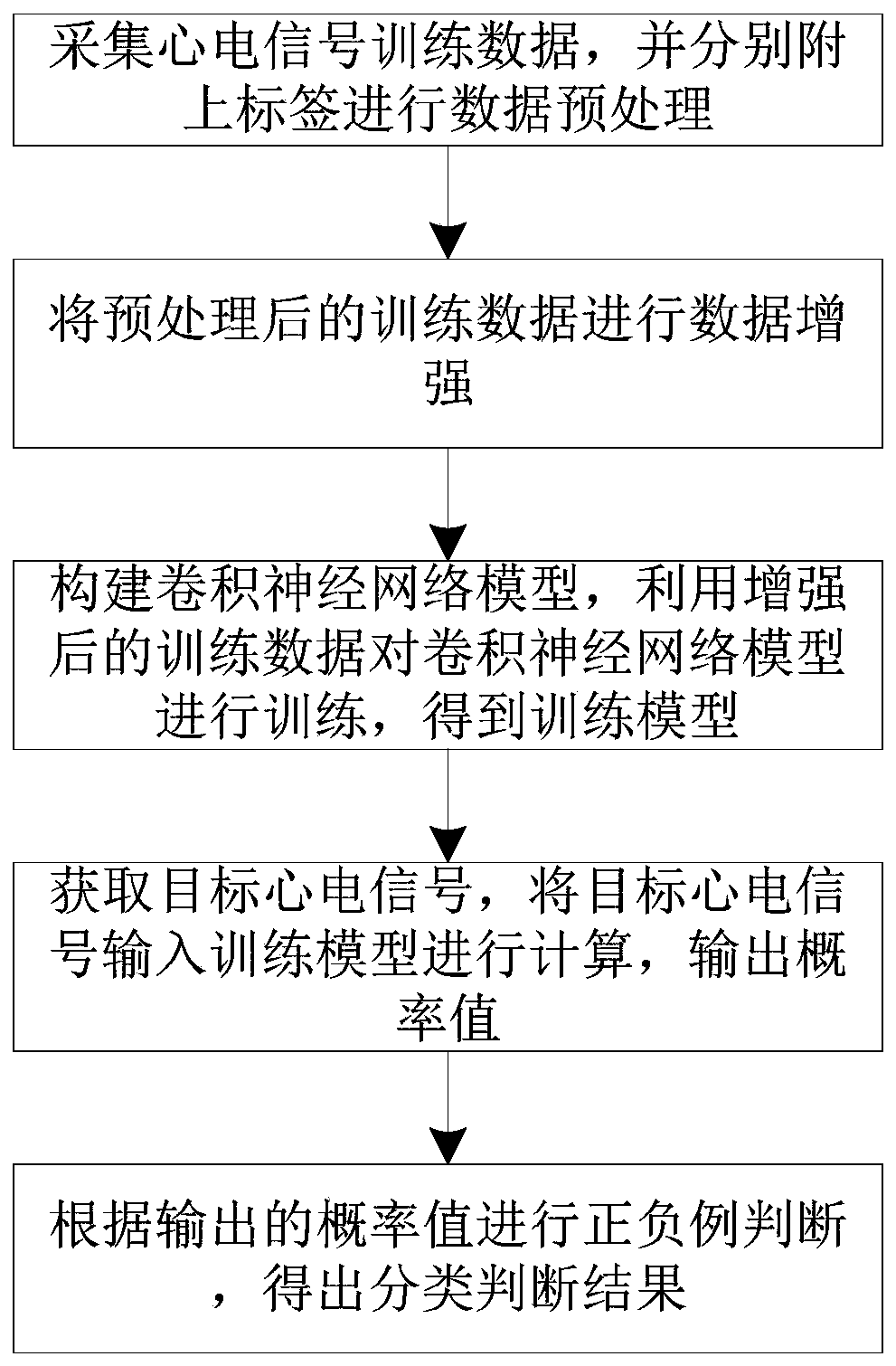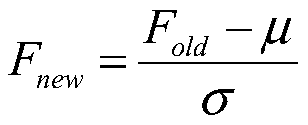Electrocardiogram classification method based on convolutional neural network
A convolutional neural network and ECG classification technology, applied in the field of ECG signal processing, can solve problems such as inability to cover, repetitive labor, and lack of versatility, and achieve compatibility, high compatibility, diagnostic efficiency and accuracy Improved effect
- Summary
- Abstract
- Description
- Claims
- Application Information
AI Technical Summary
Problems solved by technology
Method used
Image
Examples
Embodiment 1
[0067] This embodiment provides a method for ECG classification based on convolutional neural network, such as figure 1 Shown:
[0068] Include the following steps:
[0069] S1. Collect ECG signal training data, and attach labels respectively for data preprocessing;
[0070] S2. Perform data enhancement on the preprocessed training data;
[0071] S3. Building a convolutional neural network model, using the enhanced training data to train the convolutional neural network model to obtain a training model;
[0072] S4. Obtain the target ECG signal, input the target ECG signal into the training model for calculation, and output the probability value;
[0073] S5. Perform positive and negative case judgment according to the output probability value, and obtain a classification judgment result.
[0074] Such as figure 2 As shown, in step S3, the forward propagation direction of the convolutional neural network model structure includes in turn:
[0075] The first one-dimension...
Embodiment 2
[0094] As an optimization to the above embodiment, in step S1, the step of performing data preprocessing on the training data includes:
[0095] S11. Read the ECG training data of all channels, the common ones are 1 channel, 3 channels, 6 channels, 12 channels, 18 channels, etc.;
[0096] S12. Build a multi-channel data matrix: arrange the read multi-channel ECG data in a matrix form of [time_step, channel], where time_step is the time step, that is, the number of sampling points in chronological order, and channel is the number of channels;
[0097] S13. Perform data normalization processing on the data matrix: on the feature dimension (that is, the channel dimension), each feature value is subtracted from the mean value of all features under the time step, and then divided by the mean value of all features under the time step Standard deviation, the formula for normalization processing is:
[0098]
[0099] Among them, F new is the eigenvalue after normalization, F old...
Embodiment 3
[0103] As an optimization to the above embodiment, in step S2, the step of performing data enhancement on the preprocessed training data includes:
[0104] S21. In the dimension of time step, advance or delay the data by a set range;
[0105] S22, then adding Gaussian noise to the data;
[0106] S23. Finally, reverse the time sequence of the data.
[0107] The new data generated after data augmentation is added to the data set as a new sample.
[0108] Data enhancement is to improve the final generalization ability of the network by increasing the diversity and completeness of the data. If the amount of original data is sufficient, no data enhancement is required.
PUM
 Login to View More
Login to View More Abstract
Description
Claims
Application Information
 Login to View More
Login to View More - R&D
- Intellectual Property
- Life Sciences
- Materials
- Tech Scout
- Unparalleled Data Quality
- Higher Quality Content
- 60% Fewer Hallucinations
Browse by: Latest US Patents, China's latest patents, Technical Efficacy Thesaurus, Application Domain, Technology Topic, Popular Technical Reports.
© 2025 PatSnap. All rights reserved.Legal|Privacy policy|Modern Slavery Act Transparency Statement|Sitemap|About US| Contact US: help@patsnap.com



